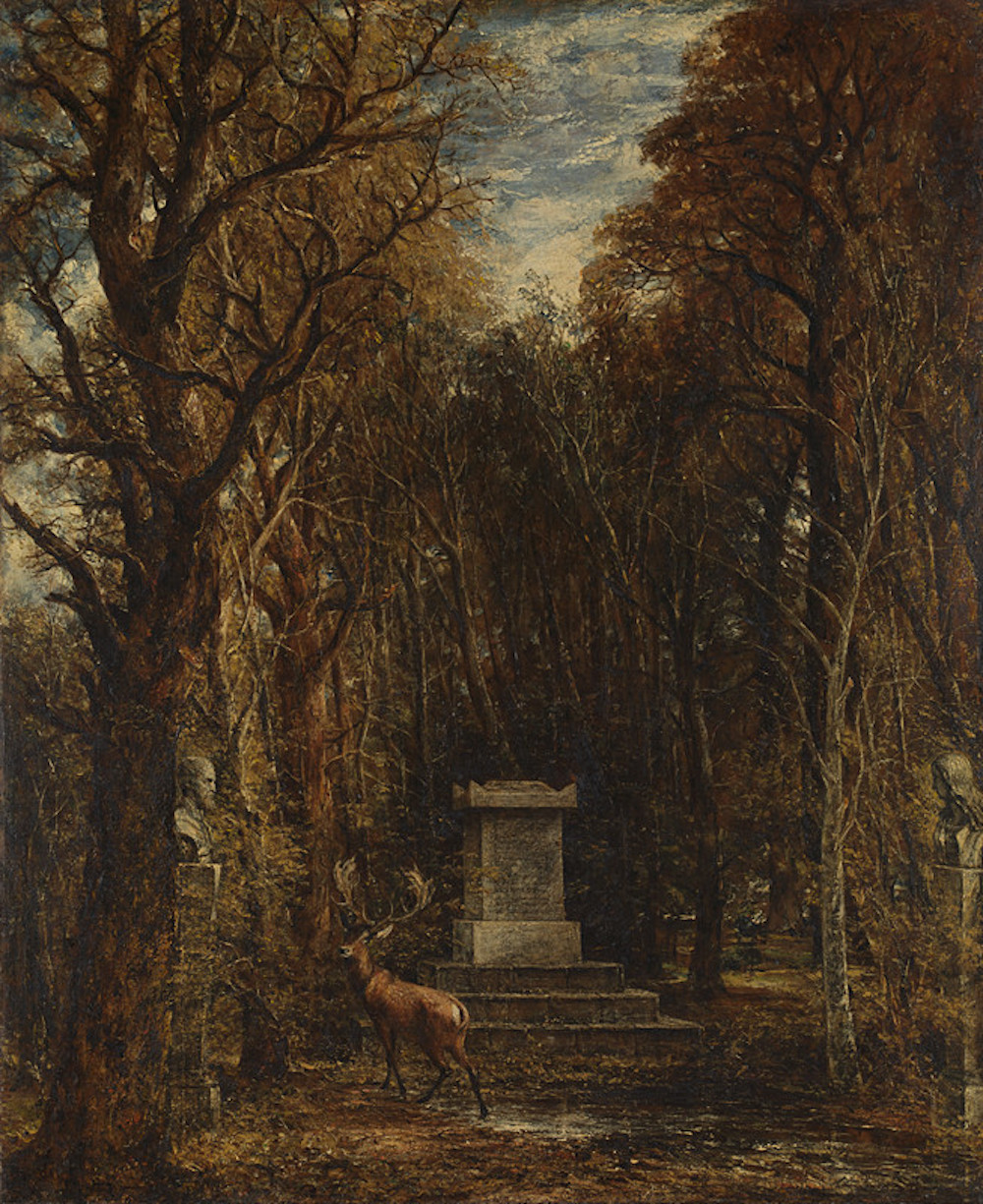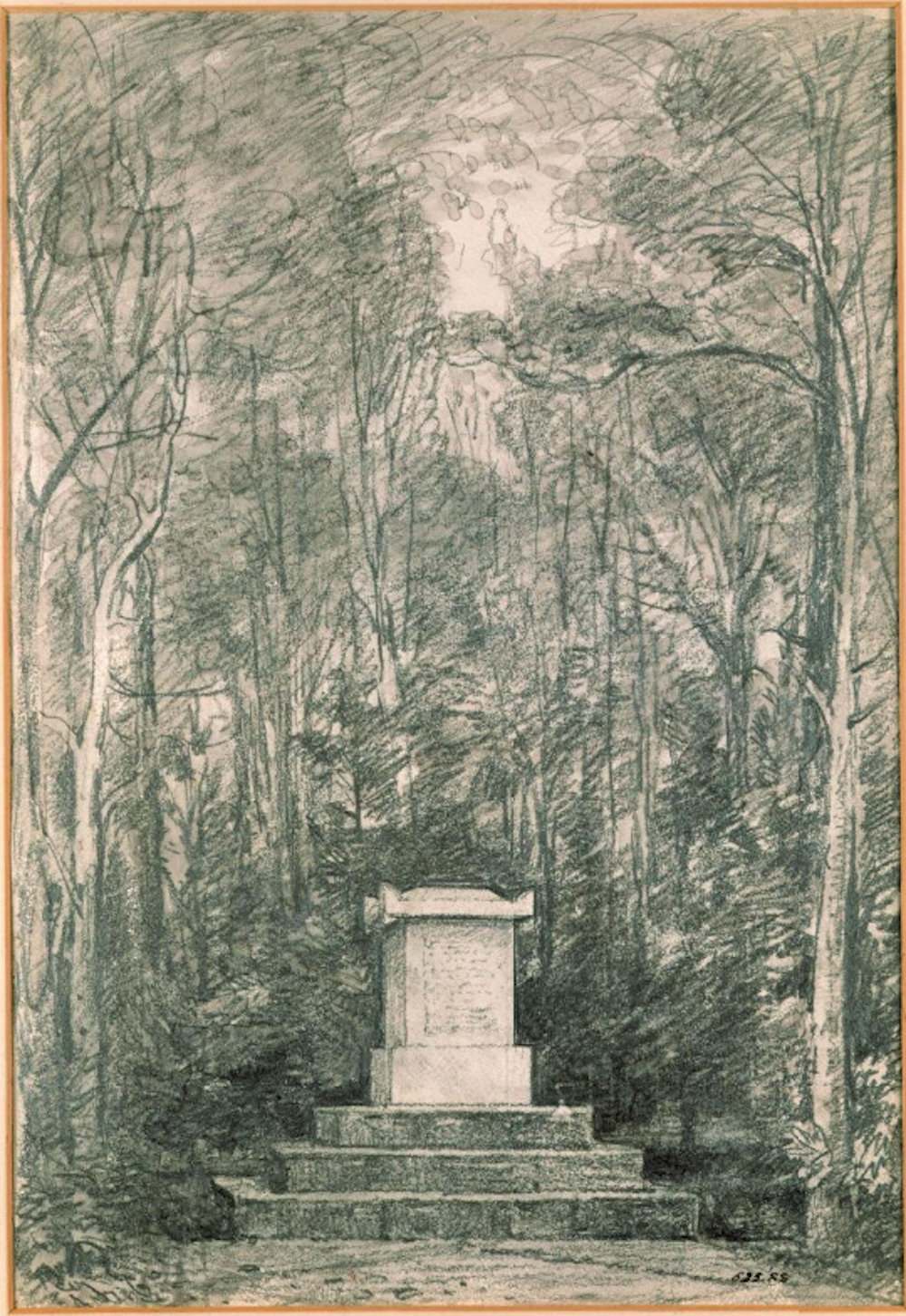Late Constable | Royal Academy
A few years back, I bought a print of one of my favourite works in the National Gallery, which as a native Londoner I’ve passed countless times over the years. Cenotaph to the Memory of Sir Joshua Reynolds was completed by John Constable in 1836, a year before the painter’s death. The romantic, autumnal scene, the deep browns of the mostly-bare trees melding into the vanilla-yellow, darkening sky, a ghostly stag gazing straight back at the viewer, is still on my wall.
Much more importantly, the original is on loan to the Royal Academy as part of a great exhibition of Constable’s late sketches, prints and paintings. Viewed close up and in isolation, and with the biographical context provided by the show notes, the desolation of the original scene seems palpable. In his later years, Constable seemed a sad figure. He lost his wife, and lived a financially and professionally precarious life, only getting elected to the RA at the age of 53, by a single vote, after years of trying.

Far from the figure he represents these days, in other words. Constable’s beautiful scenes of rural life, with that weak British light playing on his Hay Wain and Cornfield, have become national icons, passing into chocolate box cliche. But, within the context of his unsettled and sad life, troubling details within the landscapes, many of which are on show at the RA, emerge: his picturesque peasants are invariably hard at work, his unsettled skies threaten rain, and the surprisingly loose and thick brushstrokes themselves are aimed at expressive feeling rather than prettification.
Another circumstance: these peaceful rural scenes, often of Constable’s native Suffolk, were painted from the centre of town - he kept a studio in Charlotte Street - or from Hampstead, then a village outside London. From memory, and from fantasy. His Cenotaph is no different: it was painted from a sketch Constable made in 1823, when visiting Sir George Beaumont, an art collector with an impressive collection of Claude Lorrain, at his home, Coleorton Hall.
But while the classicist Lorrain is certainly a major influence, the scene Constable drew and later painted is purely romantic. The sketch was made on the last day of his stay, November 28th, and shows a cenotaph to Sir Joshua Reynolds - unlike Constable, a very successful artist. The cenotaph, the trees and the late-autumn atmosphere all make it to the final painting, made 10 years later, following a string of professional disappointments and a devastating personal loss.

Constable elevated the scene into fantasy with the addition of busts of Michelangelo and Raphael, which were actually elsewhere in the park, and that wistful-looking stag, a sentinel of sadness. With his thick paint, he overlaid layers of darkness into those trees, and topped it all with that freighted sky. The weak light that pulls the elegiac feeling together, and elevated the picture into greatness. (It didn’t sell, which is why it was donated to the National Gallery along with some of the studio’s other works by Constable’s daughter after his death.)
Elsewhere in the show, Constable’s obsession with this light is played out again and again, in his sketches and prints, and in the vigour and texture of his paint. I went back home and took another look at that flat little print on my wall. An echo of true greatness, faint as late November, late afternoon sunshine.
Late Constable is at the Royal Academy (London). 30 October 2021 - 13 February 2022